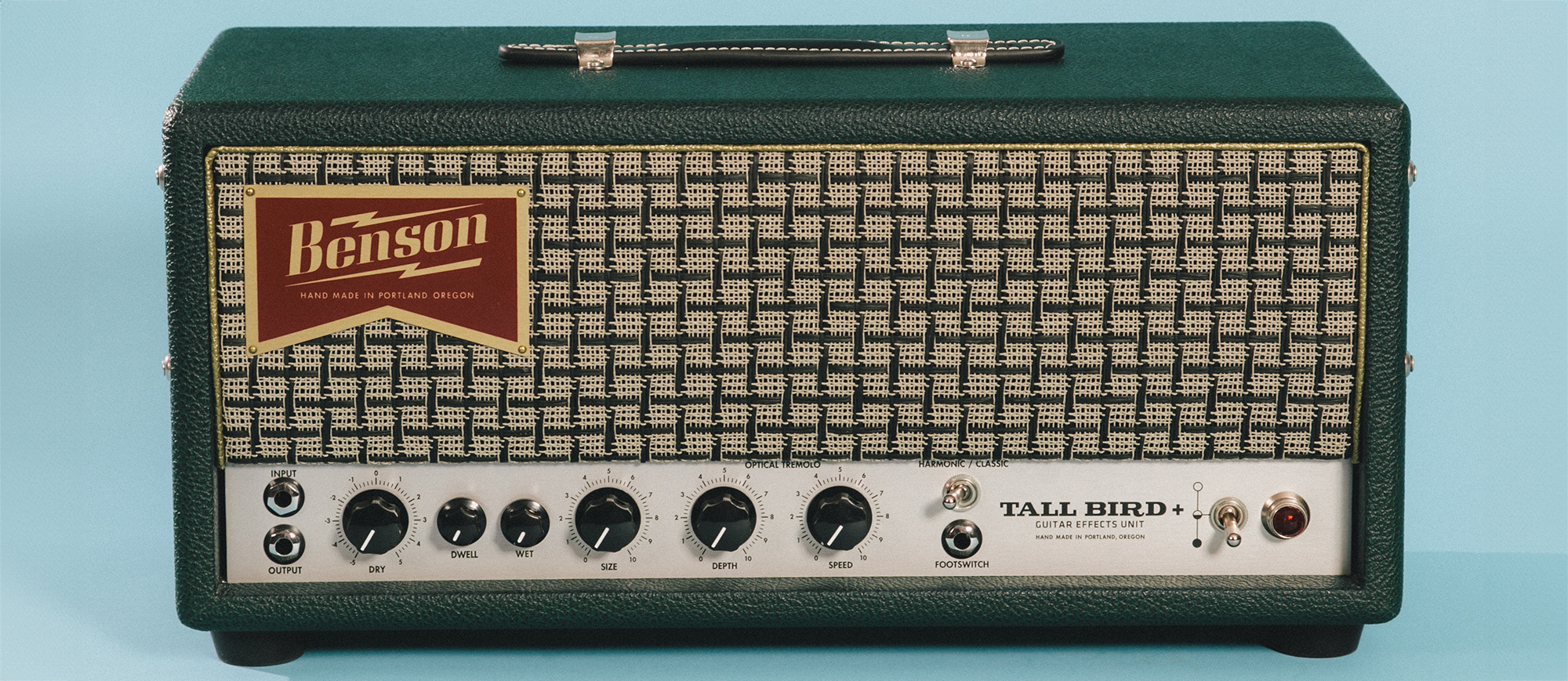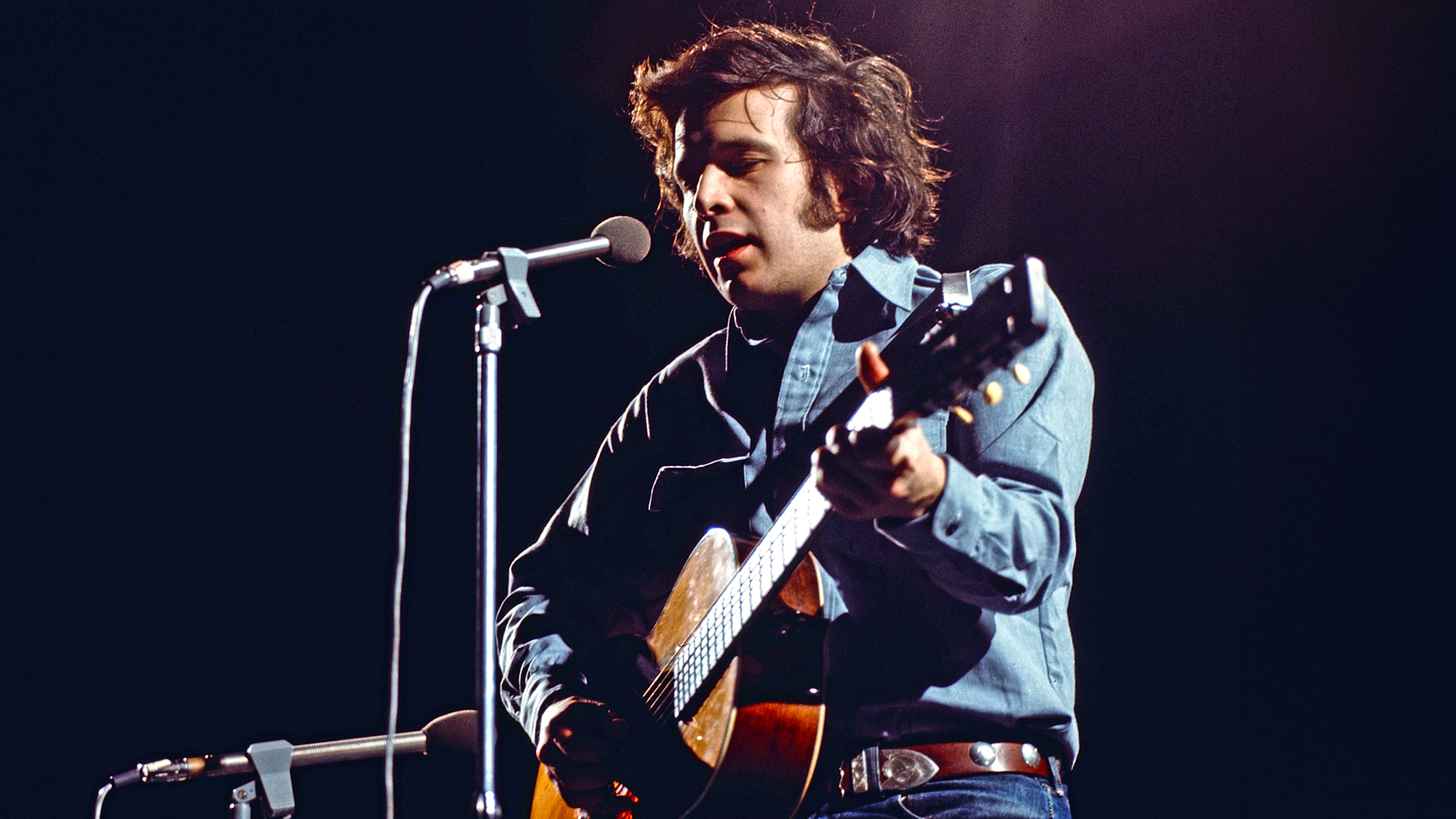GuitarPlayer Verdict
A lush tube-driven reverb and optical tremolo unit that recalls the classic sounds of the '60 with additional functionality and improved noise characteristics. Although the asking price is steep, it's justified by the design effort, component choice, and workmanship — not to mention the sounds.
Pros
- +
Lush, tube-driven analog reverb and dual-mode tremolo from an extremely well-built unit
Cons
- -
The asking price will stretch many gear budgets
You can trust Guitar Player.
The tube-fired creations of Christopher Benson of Portland, Oregon, started breaking onto the Northwest’s vibrant music scene in the early to mid 2010s and were already reaching a wider audience when I reviewed his Monarch amp and Tall Bird reverb in GP back in 2015. Since then, Benson has developed a reputation as one of the most-acclaimed small-shop, hand-wired builders of quality tube amps and effects units working today, and it’s been a lot of fun watching where this success has taken his designs.
In addition to introducing several well-received new amps in the intervening 10 years, Benson’s take on the tube-powered spring reverb unit has evolved exponentially. Where the original Tall Bird represented a twist on the external reverb units of the early ’60s from Fender and others, the Tall Bird + pushes the circuit design considerably further as a ground-up redrawing of the blueprint, with added tube-driven optical tremolo in two modes: Classic and Harmonic.
The front panel includes controls for dry, dwell, wet, size, depth and speed. The latter two apply to the tremolo, which is available in two modes via the Harmonic/Classic switch located above the jack for the two-button footswitch, included, which selects on/off for reverb and tremolo. The three knobs prior to those two govern the reverb, the less-familiar size control being a high-pass filter that offers traditional surfy drip sounds in its lower range and big hall-reverb tones higher up.
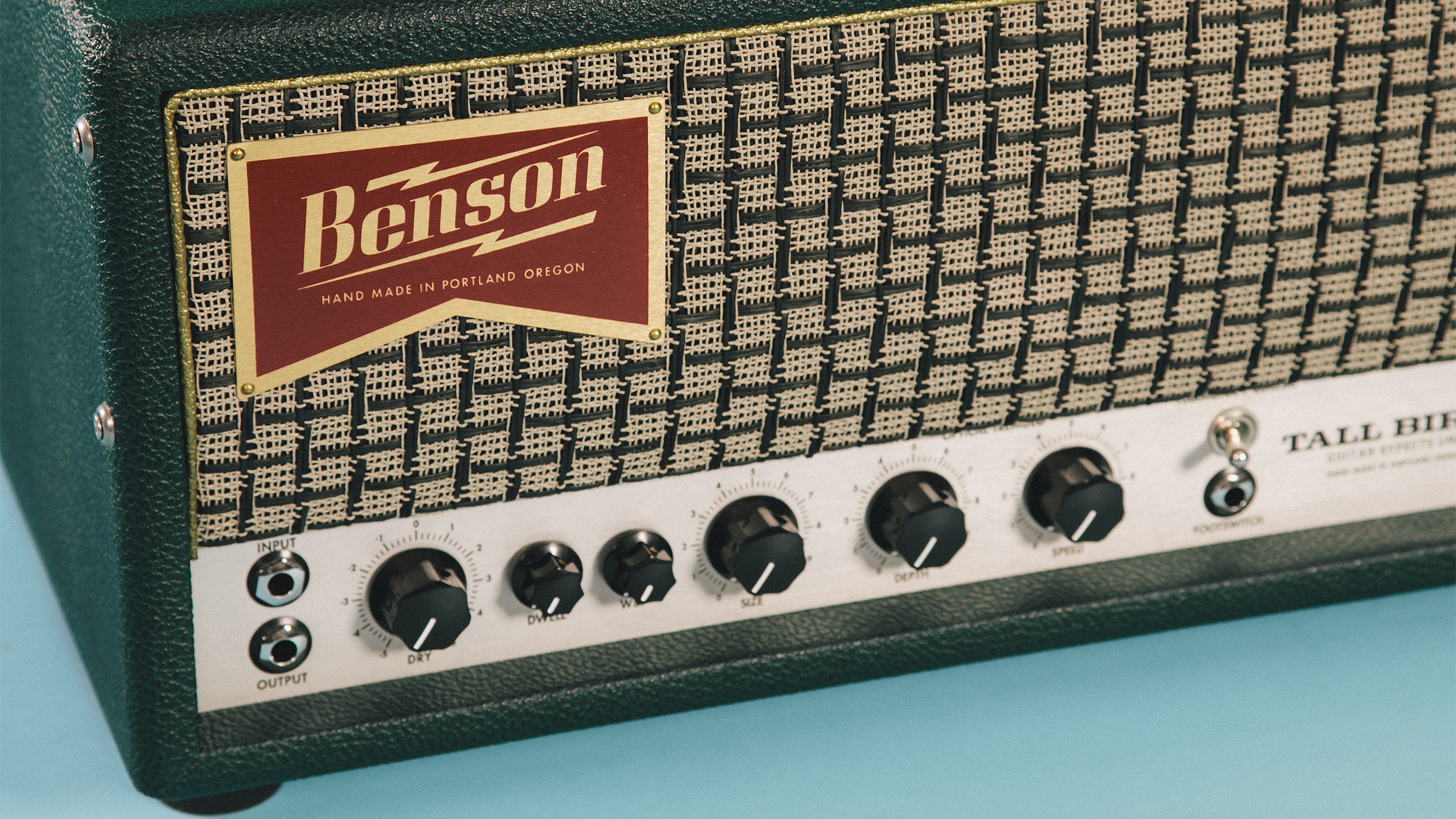
In addition to those five effects-related potentiometers, the one behind the dry knob is arguably the most unusual. In addition to determining how much unaffected signal is passed to the output along with the reverberated signal, it can push the output into overdrive when turned up past the “0” mark on the panel (straight up, which is approximately unity gain for the Tall Bird +). On the back panel, a Hi-Fidelity/Natural switch tames some of the inherent (if subtle) brightness inevitable from the tube-buffered circuit when set in the latter position.
Following Benson’s M.O., the circuit inside is entirely hand-wired using quality components. A three-pole adjustable oscillator drives the neon lamp responsible for the tremolo pulse, and the reverb comes courtesy of a long-spring tank. Three 12AX7 preamp tubes do much of the work, while an EL84 output tube drives the reverb transformer.
When asked about the interesting bonus function behind the dry knob, Benson told GP, “It was totally intentional. The dry control was designed to be clean until about three-quarters of the way up, which is above unity gain, allowing you to push an already distorted amp into saturation. Above that, the circuit of the TB+ begins to distort in a wide open, full frequency, tube-console kind of way.”
Another element of this new circuit that takes an otherwise simple effect even deeper is the duality of the tremolo’s ability to do the traditional amplitude-modulating pulse and a frequency-modulating harmonic vibrato.
All the latest guitar news, interviews, lessons, reviews, deals and more, direct to your inbox!
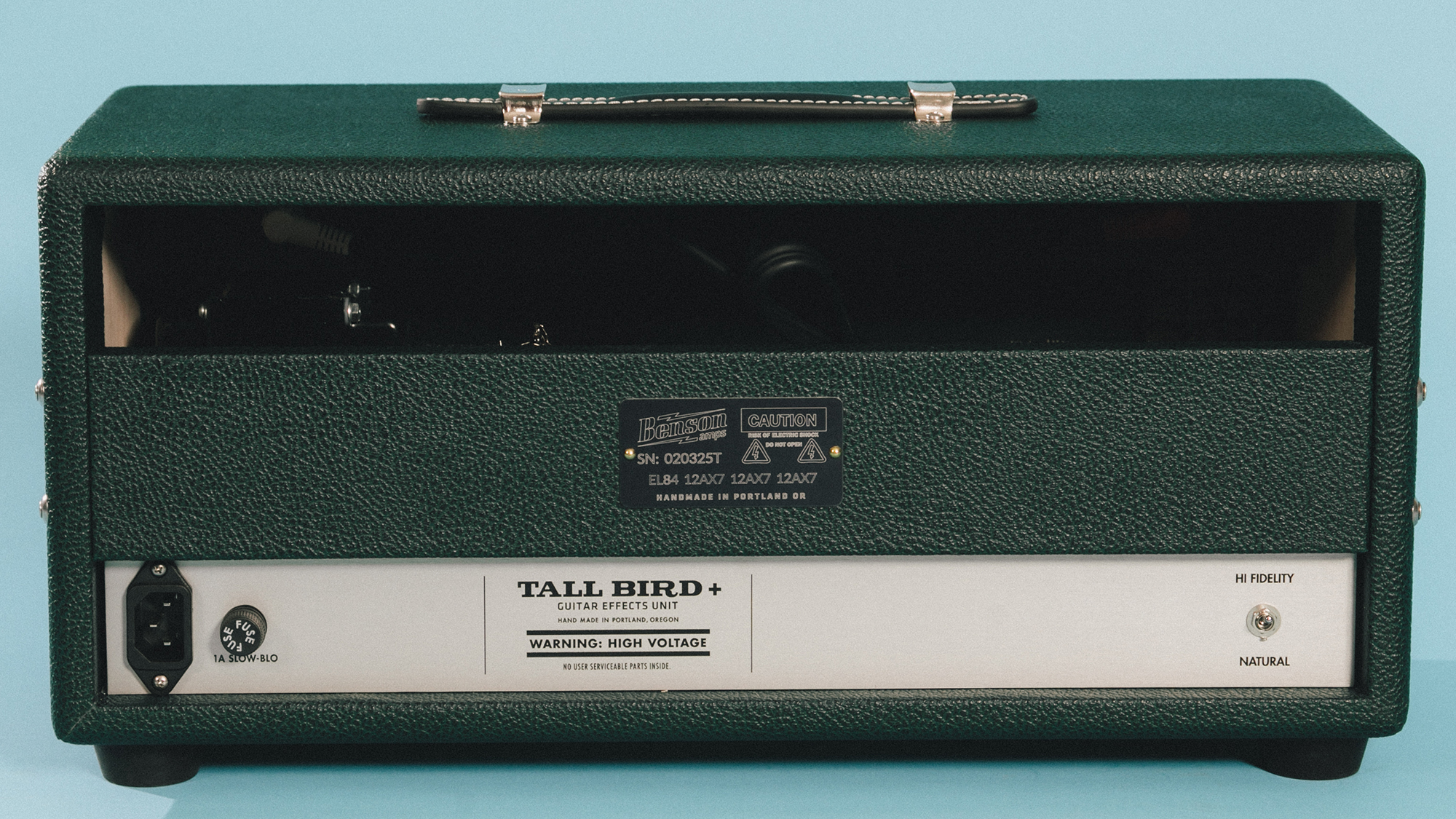
“It’s something I’ve been chasing for a long time,” Benson revealed. “Fender famously had it in the early ’60s brown-face amps, and it’s a great effect, but I wanted to figure out how to make it more intense and consistent. I ended up using two LDRs [light-dependent resistors] to modulate the high and low frequencies separately, and there was a lot of experimentation and tweaking to find just the right distance from the neon lamp to get the results I was looking for. I think Leo would be proud of this iteration.”
One less-obvious, though still significant, factor about the new Tall Bird + circuitry is the total redesign Benson gave it to achieve a lower noise floor, which involved significant reworking of the power rails and incorporating a grounding scheme used in the hi-fi audio world to avoid ground loops.
Fender famously had optical tremolo in the early ’60s brown-face amps. I wanted to figure out how to make it more intense and consistent. I think Leo would be proud of this iteration."
— Christopher Benson
I tested the Tall Bird + with a Telecaster and an ES-355 into the front end of a Voxy-voiced Carr Lincoln 1x12 combo and a Mesa/Boogie Mark IIB combo (it can also be used in an FX loop, but is optimal between guitar and amp). I discovered a world of retro-toned analog effects at the ready from a unit that is indeed impressively quiet. I’ve enjoyed stand-alone tube/spring reverbs in the past, from vintage and reissue Fenders to re-creations by contemporary builders, and it’s no stretch to say that the Tall Bird + offers the most flexibility and arguably some of the deepest sounds available from either effect — alone or combined — that I’ve heard in one of these units.
I’m perhaps most impressed with the fact that the Tall Bird + contains not only great spring reverb sounds in the realm of the classic among vintage amp or stand-alone offerings, but it also tips into studio-effect territory, producing lush, watery delays that have long been the province of golden-age recordings, and far less achievable in the live realm.
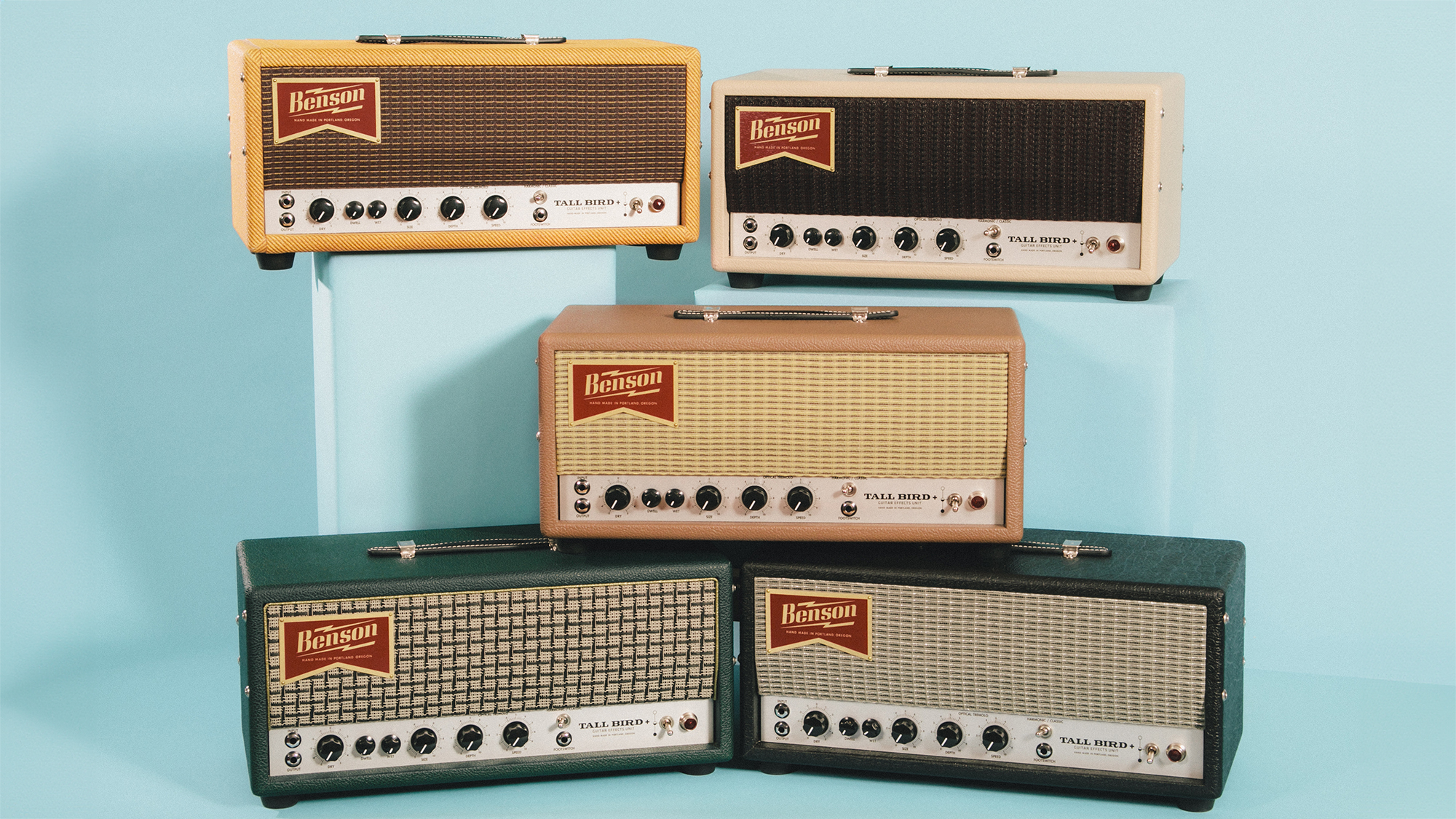
To this end, I found myself living on the space knob turned a couple places past noon for increased size and depth to the reverb — although the relatively thinner, more traditional sounds lower on the dial are also excellent — where the rich dimensionality of the effect really envelopes you.
And all of that without yet mentioning the harmonic optical tremolo… which is likewise superb. As simple an effect as it is in theory, and as excellent as many of the solid-state pedals on the market undoubtedly are, the Classic side here produces a warm, organic pulse that only great vintage tremolo-equipped amplifiers seem capable of delivering. There’s a wide range available from both the speed and depth controls, although as with many tremolo circuits I found the majority of the usable speed range bunched up within around noon to three o’clock on the dial. No big deal, such is the taper with many of these speed potentiometers.
I found myself living on the space knob turned a couple places past noon for increased size and depth to the reverb, where the rich dimensionality of the effect really envelopes you."
— Dave Hunter
Switching to Harmonic shifts the modulation to a phasey, pseudo-pitch-shifting burble that’s great for softer atmospheric adventures, while also great for mellow jazz or psychedelic rock, and a lot of fun in the process. In use, I found the effect of the Normal/Hi-Fidelity switch relatively subtle, but it should be useful for anyone driving much longer cable runs onstage or in the studio, and it’s another handy tone-tweaker either way.
Put the extremely flexible reverb and either breed of tremolo together and the Tall Bird + is a texturalist’s or sound sculptor’s delight. Anyone who needs to remain conscious of their gear expenditure will already have noted that this impressive new effects unit from Benson doesn’t come cheap, at just a notch shy of two grand, but a lot has gone into the design effort, component choice, and workmanship to go toward justifying the asking price. Otherwise, I don’t think I’ve elicited more rich and evocative reverb and tremolo from even the best vintage amps that carry them, and that’s saying something.
SPECIFICATIONS
CONTACT bensonamps.com
PRICE $1,899 direct
CONTROLS Dry, Dwell, Wet, Size, Depth, Speed, Harmonic/Classic switch
CONNECTIONS Input, Output, ¼" TRS jack for two-button footswitch, included
TUBES 3x12AX7, 1xEL84
BUILT USA
KUDOS Lush, tube-driven analog reverb and dual-mode tremolo from an extremely well-built unit.
CONCERNS The ask price will stretch many gear budgets.
Dave Hunter is a writer and consulting editor for Guitar Player magazine. His prolific output as author includes Fender 75 Years, The Guitar Amp Handbook, The British Amp Invasion, Ultimate Star Guitars, Guitar Effects Pedals, The Guitar Pickup Handbook, The Fender Telecaster and several other titles. Hunter is a former editor of The Guitar Magazine (UK), and a contributor to Vintage Guitar, Premier Guitar, The Connoisseur and other publications. A contributing essayist to the United States Library of Congress National Recording Preservation Board’s Permanent Archive, he lives in Kittery, ME, with his wife and their two children and fronts the bands A Different Engine and The Stereo Field.
